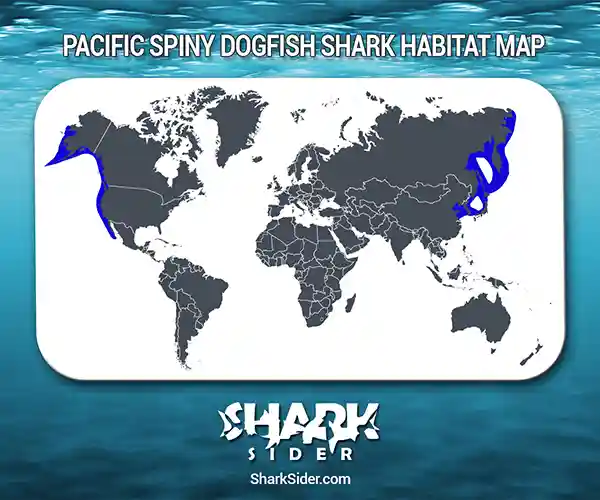Pacific spiny dogfish sharks are one of the most abundant species of shark in the world. It is also referred to as “North Pacific Spiny Dogfish”, “Spiny Dogfish”, and “Spotted Spiny Dogfish”.
Pacific Spiny Dogfish Shark Scientific Classification |
|
| Kingdom | Animalia |
| Phylum | Chordata |
| Class | Chondrichthyes |
| Order | Squaliformes |
| Family | Squalidae |
| Genus | Squalus |
| Scientific Name | S. suckleyi |
Description
The most notable feature of these sharks is the spines on the dorsal fins that act as their namesake. Their bodies are covered with dermal denticles made of the same material as the shark’s teeth. It breathes through the five gill slits on each side of its head.
Pacific spiny dogfish are shaped like a cylinder, with a flat head, pointy snout, and teeth that specialize in grinding meat instead of tearing flesh.
While being gray dorsally and white ventrally like many other sharks, white spots on the back of the Pacific spiny dogfish help distinguish it.
Where do they live
Map Of The Pacific Spiny Dogfish Shark’s Habitat

As the name indicates, this shark resides in the Pacific Ocean, with sightings in the Aleutian Islands, Baja California, the Bering Sea, British Columbia, the Gulf of Alaska, Japan, Korea, and Russia.
They seem to prefer both inshore and offshore bays, and while they can live in brackish waters, they tend to live in seawater.
Behavior
Hunting
It scouts out its prey on the ocean floor with the help of its large eyes, feeding on krill, shrimp, or squid.
Reproductive
After a long gestation period of 18-24 months, females give birth to as many as 20 pups. Interestingly, the pregnancy appears to be dependent on temperature, with sharks in cooler waters taking longer to come to term. A newborn dogfish is 8-9 inches long.
Sexual maturity is observed at around 25 years when the females are 27-39 inches long, and the males are 23-28 inches long. These sharks are long-lived, with some living up to 100 years. Their age is measured with the help of the enamel on their spines.
Adaptations
The spines on this dogfish’s dorsal fins act as a deterrent against predators. They also secrete a form of venom for added protection.
Their caudal fin is helpful to this shark by letting them swim more efficiently.
Interactions with humans
As a result of the slow reproductive and growth rates, this shark exhibits, making them vulnerable to overfishing. Despite this, the IUCN lists it as “Least Concern” or “LC” because the population remains stable.
